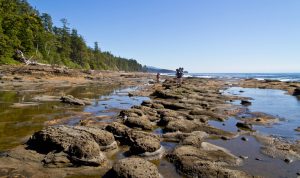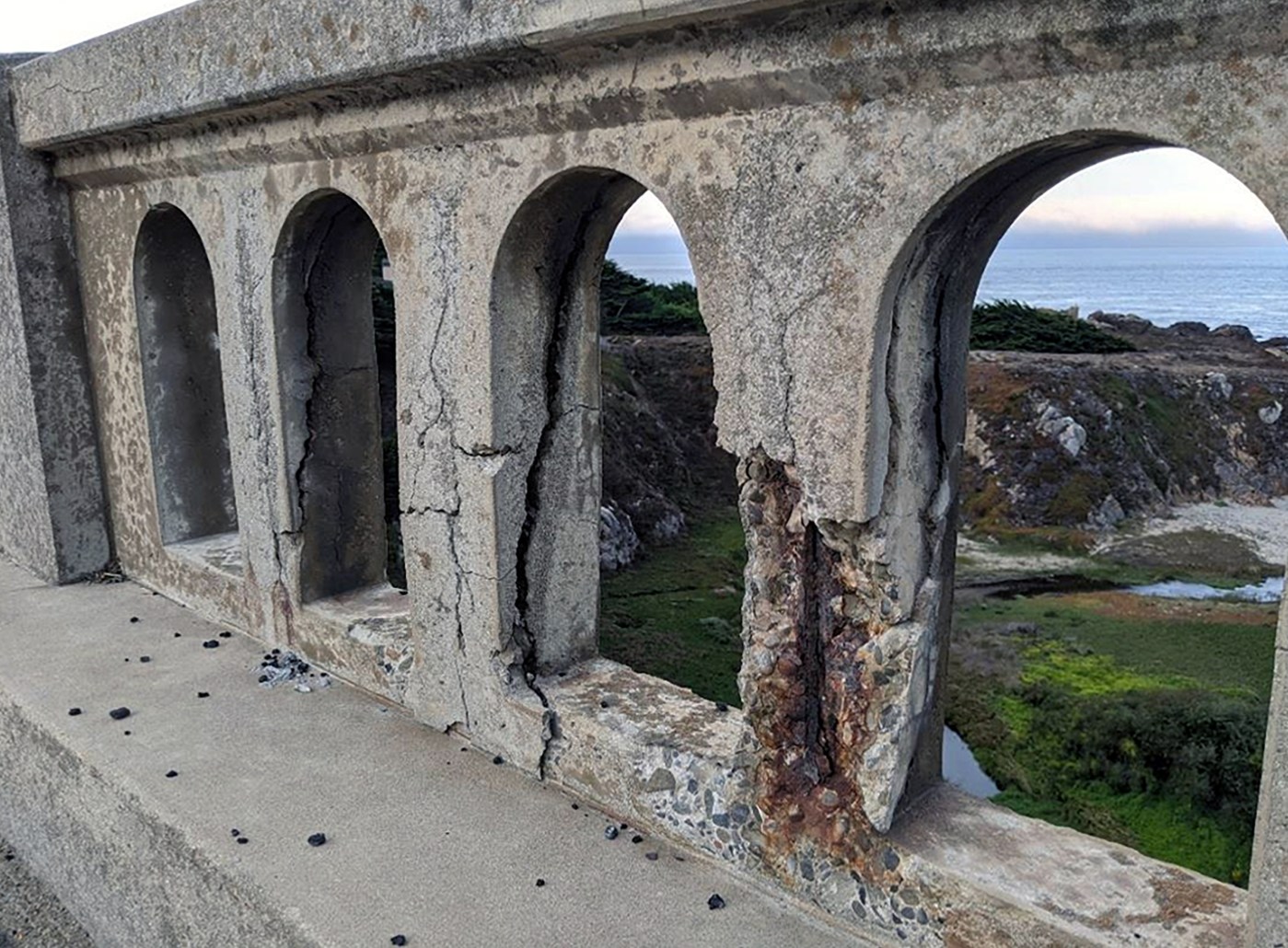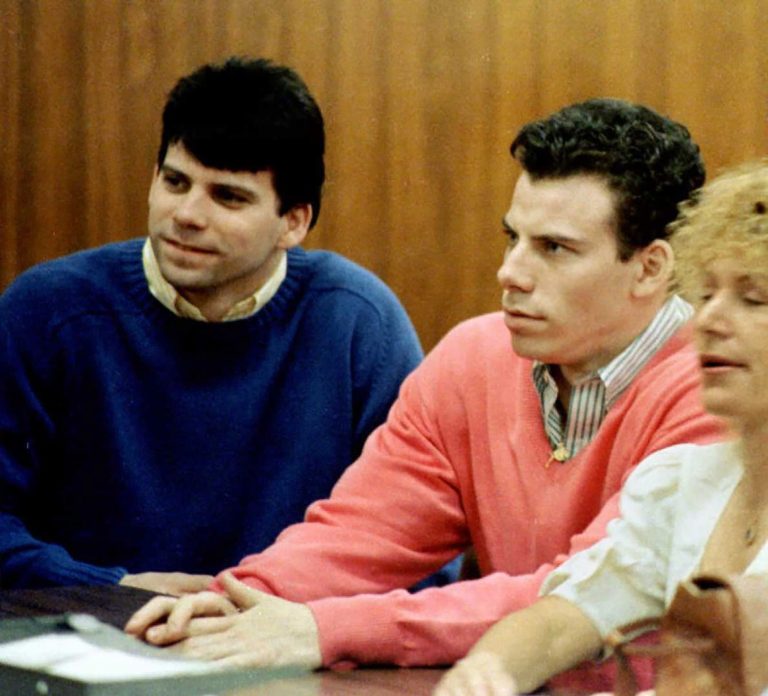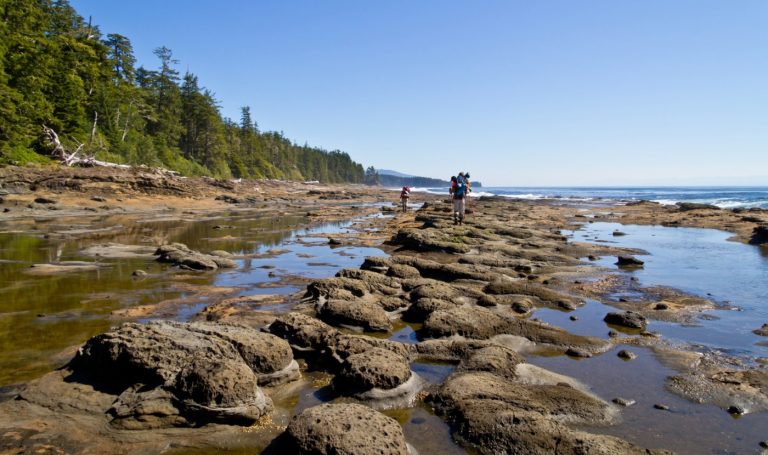To drive over Big Sur’s Garrapata Creek Bridge is to witness a magic trick.
The railing of the inhistoric bridge doesn’t conceal the stunning view — rather, the beach sails majestically into sight, seemingly unobstructed.
But the vista is under threat, because the remarkable railings at this 1930s-era bridge — and five other famed “Big Sur Arches” — are cracking and dangerous, so they must be replaced with sturdier structures. Once they’re gone, so is the beautiful illusion.
A proposed $8.8 million project by Caltrans to install safe new railings on the Garrapata Creek Bridge — obstructing the ocean view with a higher base, thicker top rail and smaller arches, reducing the width of the portals from 10 to 6 inches — has ignited a feud in this remote rugged landscape, immortalized in poetry, writings and millions of #BigSur Instagram posts.
Opponents are issuing a call to arms: Save the railing!
“It’s so much more than just a rail to keep people on the road. It gets to the core of what Big Sur is all about,” said Mary Adams of the Monterey County Board of Supervisors, which unanimously agreed to issue a preliminary rejection of the Caltrans plan.
Caltrans says the old railing is beyond repair. While its new design is not a perfect replica, it was custom-designed to match the aesthetic character of the existing railing, along the Big Sur corridor, according to Caltrans.
Photo simulations of new railing designs on Garrapata Creek Bridge:
Bridge rail replacements also are planned on the other historic bridges along the Big Sur corridor for an estimated cost of $45 million.
The proposed Garrapata Bridge replacement, unveiled in December, is the result of a years-long effort involving 12 different prototypes, seven design advisory committee meetings, architectural historians, public outreach and the expertise of the state’s top bridge engineer, according to Mitch Dallas of Caltrans.
“The bridge rail needs to be brought to modern safety standards. There’s no exception available,” he said. “This is a state highway. It has millions of users.”
The current 10-inch wide portals are “catch points” for vehicle bumpers. In an accident, the railings may not be strong enough to keep vehicles on the road. Modern bicycling standards require narrower openings between balusters.
Garrapata Creek Bridge. (Photo Courtesy: Brad Wright)
In addition to a larger base and thicker rail, the new proposal reduces the number of arched portals from 760 to 486, or 36%. It shrinks the vertical dimension of each arch portal by 26% to 40%.
The shrinkage of each arch represents “only four inches of difference,” he said.
The bridge battle now will move to the California Coastal Commission. Eventually, the fight could end in a courtroom.
Built in 1931, the Garrapata Creek Bridge spans a deep canyon like a concrete ribbon. Its concrete abutments are anchored into sheer rock walls. The open curved arches beneath the roadbed soar above the wild creek.
While shorter and less famous than its sibling Bixby Bridge, four miles away, the graceful Garrapata Bridge is an important part of what prominent Princeton structural engineer David Billington named “the best series of arch bridges in the United States.”
From a car, “you see a meeting of sea and land,” said longtime local Martha Diehl, who also serves on the Monterey County Planning Commission.
“As you drive across, the railing disappears like an old-time movie,” she said. The creek’s blue lagoon is framed by majestic rocky promontories, and “you can see down to where the waves crash on the shore.”
But the bridge, as well as the other Big Sur Arches, is suffering from wear and tear.
There’s irreversible damage from the thick pillows of fog that roll onshore, blanketing the bridge in salty moisture.
On the railing, cracks are beginning to emerge. To slow the corrosion of rebar that supports cement, the bridge recently underwent a $13.5 million electrochemical chloride extraction process.
Meanwhile, a growing amount of traffic travels across this steep and narrow route, the western edge of the North American continent. On peak weekends, tourists can sometimes stall to a standstill along Highway 1 as drivers await parking spots near bridges, horns honking.
Big Sur’s bridges are narrow — 24 feet wide, far below modern standards that require 32 feet. Space is shared with bicyclists.
Rocky Creek Bridge on Highway 1 in Big Sur on Monday, Sept. 25, 2023. The bridge, built in 1932, is one of six historic arch bridges along the Big Sur Coast that CalTrans has proposed rail replacements to bring the facilities up to current traffic safety standards. The other bridges are Big Creek Bridge, Bixby Creek Bridge, Garrapata Creek Bridge, Granite Canyon Bridge, and Malpaso Creek Bridge. (Doug Duran/Bay Area News Group)
When the bridges were built, a Ford Model A roadster measured only 5½ feet across. Today’s Winnebago RVs and semi trucks measure 8½ feet across.
The spans weren’t designed to withstand an impact from today’s vehicles, which are fast and heavy, says Caltrans.
The bridges, and their lighter railings, evoke a slower and more gracious era that is slipping away from the region, said Adams. “We’re losing the essence of a community that has been resilient for so many decades.”
Big Sur has long prided itself on preservation. It was a pioneer in banning billboards back in the 1930s. Its management plan protects views and restricts any development that can be seen from Highway 1, with few exceptions. Every federal and state proposal to take away local control has met fierce opposition.
But the bridge belongs to Caltrans, which is legally responsible for its upkeep.
Other alternatives — repairing the rails, widening the bridge, improving alignment — have been reviewed but dismissed by the Caltrans as impractical or ineffective.
Monterey County planners backed a different design, with 10-inch wide arches that are strengthened with a metal “U bar.” But the six-inch arches are favored by Caltrans.
Opponents scoff at the need for replacement projects, which will cost an estimated $48 million for all bridges.
“The modernization to these bridges is really not necessary when they can be repaired and restored,” said Christina McGinnis of Keep Big Sur Wild, a nonprofit that seeks to protect the character of the coast.
There have been no fatal accidents on Big Sur’s bridges, they note. To keep motorists from plunging off a bridge, Caltrans should reduce the speed limit.
Supervisor Glenn Church asked: “These railings have been here for 90 years. How many people have slipped through?”
The project is akin to “putting Home Depot windows on Hearst Castle,” said Jim Heid of Albion Bridge Stewards, preservationists on the Mendocino coast. “It will destroy the historic design of this bridge. Once they’re gone, they’re gone.”
The outcome could influence the fate of Big Sur’s other famed arches. Next in line for rail replacement is the Rocky Creek Bridge, as decrepit as the bridge over Garrapata Creek.
“Is there a better option that we haven’t yet put on the table?” asked Supervisor Luis Alejo.
“What we do now will impact future generations,” he said. “We want to make sure we get this right.”













+ There are no comments
Add yours